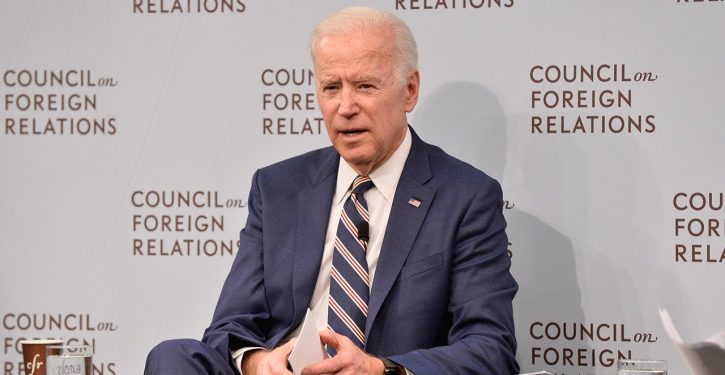
CBS reported on Monday that Russia has about 80,000 troops deployed to Ukraine’s eastern flank: some 40,000 in Crimea, and another 40,000 in Russia on the border with the regions of Luhansk and Donetsk.
There hasn’t been such a buildup on Ukraine’s border since 2014. I discussed the buildup earlier here, and it has continued to expand since then. The Washington Post’s report on 9 April indicated as many as 85,000 Russian troops were present, a number that is probably less than Moscow would want for a full-scale invasion (Ukraine is a very large country), but would be sufficient, in conjunction with local separatists, to effect the rapid subversion of Donbass and make it very difficult for Ukraine to recover the territory.
In addition to infantry transport vehicles, support vehicles, SAM launchers (including S400), and other systems seen being carried on the rails across Russia a week to 10 days agao, a Moscow Times article from Friday cites Jane’s analysts as reporting that “Russia has deployed motorized rifle, artillery and airborne units near Ukraine.” Russia has also moved elements of the Iskander short-range ballistic missile system to (reportedly) Voronezh. The Iskander is capable of delivering nuclear warheads.
Will this presidential election be the most important in American history?

Tellingly, Jane’s also notes that an “army-level communication system” now present “at a training ground south of Voronezh is not used at battalion or brigade levels and ‘is indicative of the scale of the deployment.’” In other words, this system supports command at the highest tactical level, and has already been put in place. That’s not something you do unless you mean business. Signals of determination or resolve can be sent with less of the infrastructure unique to a fight directed from a high echelon of command.
The 40,000 troops in Crimea have inherently the character of a (somewhat willingly hosted) occupation force. As for the others, the incomplete information on the forces arrayed around Luhansk and Donetsk suggests they are infantry-heavy, backed by artillery and an airborne reserve, and protected by frontline anti-air systems and Iskander missiles that are meant to deter NATO, rather than being needed against Ukraine.

That said, a Twitter post on Saturday showed Russia apparently moving a number of older T-72B tanks to the border area, along with an array of infantry fighting vehicles that would give Russian and separatist forces local advantage in tactical skirmishes in Donbass. (This development, if it resulted in force use in Ukraine, would vindicate the Javelin antitank missile deliveries pursued so diligently back in 2019.)
https://twitter.com/pmakela1/status/1380938876961820674
This is one reason I can’t go with the chirpy assessment in WaPo’s 9 April article: “Russia’s moves are seen more as a statement of resolve than a prelude to an offensive.”
Russia quite probably doesn’t want to mount an offensive, in the sense of being the party to break the uneasy ceasefire. But this buildup is not a statement of resolve. This is preparation for a fight.
Vladimir Putin punctuated the preparations with a refusal to join an OSCE parley with Ukraine on 10 April:
Russia declined to participate in today's @OSCE meeting with Ukraine to explain its unusual military buildup on 🇺🇦's borders and in occupied Crimea. We regret that Russia did not avail itself of this opportunity to address concerns and reduce risks under the #ViennaDocument. pic.twitter.com/wwkBxFD4Us
— U.S. Mission to OSCE (@usosce) April 10, 2021
Via a top official, Russia signaled earlier in the week that if war breaks out, it will be the “end of Ukraine”:
Dmitry Kozak, who serves as Russian President Vladimir Putin‘s deputy chief of staff, said Thursday during a virtual talk among experts that in the event of a major offensive by Ukrainian forces, Russia would be compelled to defend its citizens currently living in the eastern Ukrainian border regions that declared autonomy from the central government in Kyiv seven years ago.
Said Kozak: “I support the assessments that also exist inside Ukraine that the beginning of hostilities is the beginning of the end of Ukraine.” Hostilities, Kozak indicated, would be “a self-inflicted wound” on Ukraine’s part; “a shot not in the leg but in the face.”
Unconciliatory language, to say the least. These messaging interludes – especially the refusal to engage in the OSCE forum – lend color to unconfirmed social media reports that Russians and separatists in Donbass are trying to provoke an initiation of hostilities locally, on Ukrainian-held territory, to justify a Russian response.
Ukrainian intelligence intercepted talks between militant and a Russian commander.
Commander provided the coordinates of other fellow militants for targeting in hopes it would provoke a strong Ukrainian response and “…start the active stage.”
— The Intel Crab (@IntelCrab) April 9, 2021
U.S. non-response
Meanwhile, U.S. media are making much of the report that two U.S. Navy destroyers are headed to the Black Sea. The destroyer movement isn’t about Ukraine, however.
Turkish TV has confirmed that the destroyers are USS Roosevelt (DDG-80) and USS Donald Cook (DDG-75). Both destroyers are homeported in Spain.
Donald Cook has rotated numerous times through the Black Sea on ballistic missile defense patrol. Roosevelt, which switched homeport to Spain in the spring of 2020, completed her first Black Sea patrol later last year. This is a standard patrol profile for our Spain-based force. And frankly, it makes me nervous that we’re sending them into the Black Sea, inevitably by themselves – there’s a limit to what we can have in the Black Sea at a given time – when the Ukraine situation is so volatile.
https://twitter.com/ekar56/status/1380857803733098497
(The Turkish government knows which ships are to enter the Black Sea because Turkey administers the Montreux Convention and is notified of all such transits through the Bosphorus.)
The two Navy destroyers, capable though they are, would be woefully overmatched against the land-based air and missile forces of Southern Russia. Our destroyers are not heading to the Black Sea to join a fight in Ukraine. We can’t put a force adequate to such a task in the Black Sea without violating the Montreux Convention.
Aid fade
What are we doing, besides collecting intelligence and attempting diplomatic engagement through the OSCE? It turns out one thing we are not doing is releasing all the aid allocated for Ukraine in the U.S. 2021 defense budget. (A policy affirmed by Politico in mid-March, and its status just updated on Monday by OANN.)
The irony of this is off the charts, considering the extraordinary dust raised by Democrats when former President Trump delayed delivery of aid to Ukraine in 2019. Indeed, the aid delay was routinely cited as an abuse of executive power, and formed part of the brief against Trump as the House of Representatives moved to impeach him. (Total defense aid provided to Ukraine by Trump in 2019 amounted to $415 million.)
Biden excoriated Trump for the delay at the time.
The delay by Trump was linked in part to a U.S. demand for Ukrainian governmental reforms. (It was also part of an overall review of military aid undertaken during the 2019 fiscal year.)

So it is extra-ironic that the delay of aid by President Biden is tied to a demand for Ukrainian governmental reforms.
We’ll just take that at face value for now, and not speculate that Biden’s goal is to eliminate the indictment he is under in Ukrainian court. No doubt, governmental reforms are needed in Ukraine.
But when Trump delayed aid for a few weeks in 2019, there wasn’t a theater army-group-size buildup by Russia on Ukraine’s border. In 2021, as Biden holds back allocated aid, there is such a buildup.
The aid package in question breaks down as follows. Biden has released $125 million in aid, an action taken the first of March, although the current status of the deliveries is unclear. According to Defense News:
The biggest items included are two Mark VI patrol boats produced by SAFE Boats International, bringing Ukraine’s fleet up to eight of the vessels.
The package also includes “capabilities to enhance the lethality, command and control, and situational awareness of Ukraine’s forces through the provision of additional counter-artillery radars and tactical equipment; continued support for a satellite imagery and analysis capability; and equipment to support military medical treatment and combat evacuation procedures,” per a Pentagon statement.
The counter-artillery radars, and presumably the tactical equipment, would be of the most immediate use if hostilities commence with Russia. The Mark VI patrol boats have a variety of uses, but would probably not fare well against massed Russian artillery in an inland riverine role, and might prudently be sidelined as well from offshore confrontations with the Russian navy in the Black Sea.
What remains at issue is a $150 million package – allocated, like the $125 million, in the 2021 defense budget – whose release is being delayed pending the governmental reforms. Research at this point hasn’t revealed what’s included in that $150 million.
It probably wouldn’t be the tiebreaker in a Russia-Ukraine conflict. But after the months of hyperventilation over the aid delay under Trump – which lasted about eight weeks in 2019 – it would be gratifying merely to see some commensurate interest, even without heavy breathing, in the aid delay under Biden, in conditions much more dangerous and unstable for Ukraine.




